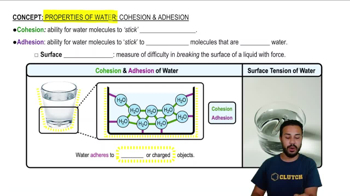Multiple Choice
A molecule that has all nonpolar covalent bonds would be __________.
1482
views
 Verified step by step guidance
Verified step by step guidance Verified video answer for a similar problem:
Verified video answer for a similar problem:



 5:19m
5:19mMaster Properties of Water- The Universal Solvent with a bite sized video explanation from Jason
Start learning